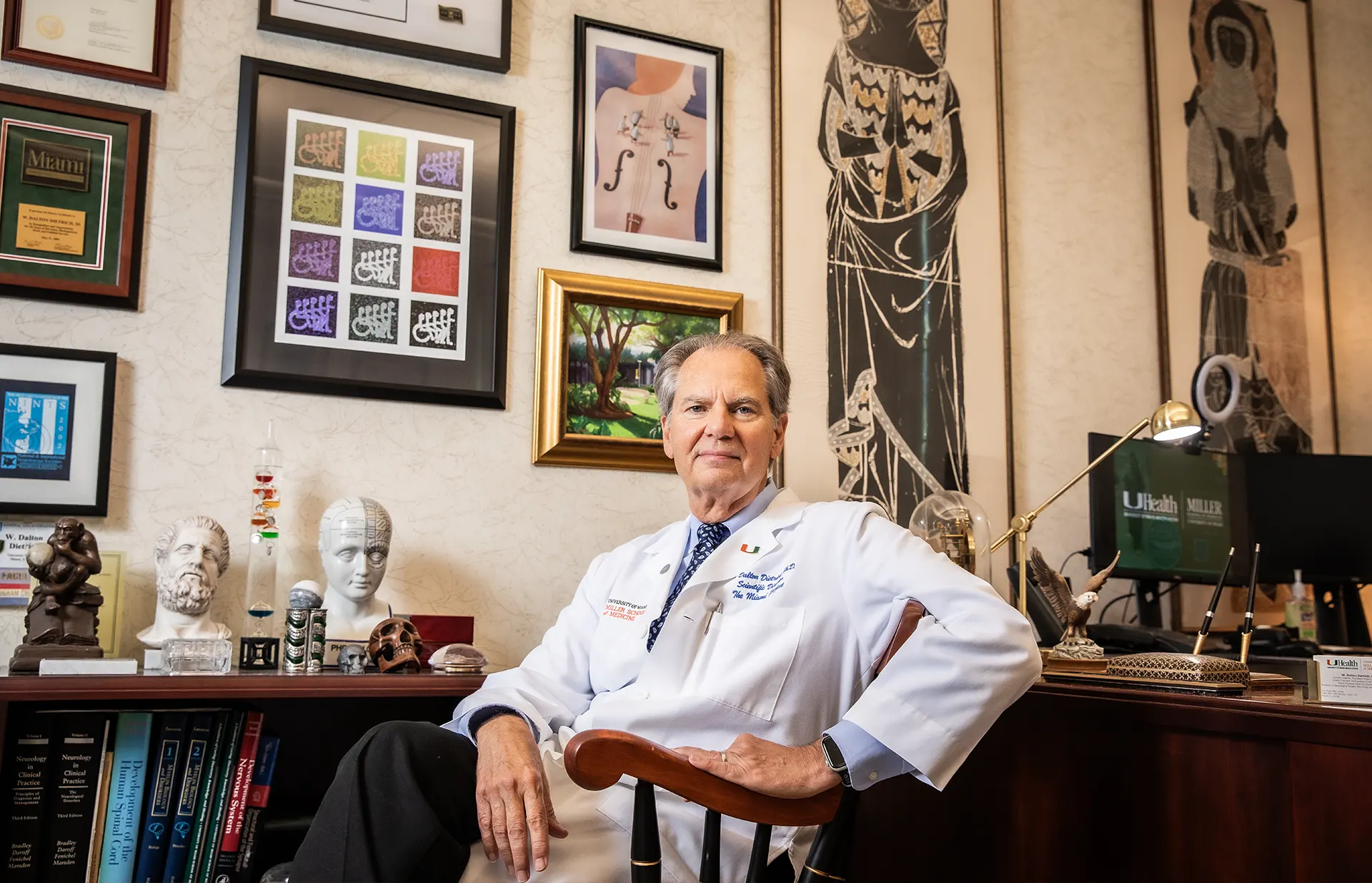A Blended Approach to Alzheimer’s Diagnosis
Pairing cognitive stress tests with PET scans helps identify people at risk
As populations age, Alzheimer’s disease and other forms of dementia become more prevalent. In the U.S., researchers expect the number of people with Alzheimer’s to nearly double by 2050. And while several new treatments have been approved recently, they will only slightly mitigate this problem.
“We need to blend expertise and knowledge from different areas to tackle this challenge. Team science is essential in everything we do,” said David Loewenstein, Ph.D., professor of neurology and psychiatry and behavioral sciences, who heads the Center for Cognitive Neuroscience and Aging, which combines experts on Alzheimer’s, vascular disease, stroke, movement disorders, neurology, geriatric psychiatry and other disciplines (see below). One of its highest priorities is improving early detection.
“By the time people are clinically diagnosed with Alzheimer’s, so much has already gone wrong with the brain,” Dr. Loewenstein said. “We need to intervene before this Alzheimer’s cascade occurs and the whole brain gets overwhelmed by disease. Equally important are people who have significant Alzheimer’s pathology in the brain for years but may have very mild or no cognitive and functional decline over their lifetimes.”
CNSA is leading the way with cognitive stress tests. These are not unlike cardiovascular stress tests, during which patients walk a treadmill to increase their heart rates. Cognitive stress test participants must demonstrate their ability to learn words and recall them. This is part of a comprehensive strategy that includes PET scans to detect amyloid plaques and tau tangles, two hallmarks of the disease.
This combined approach solves a couple of problems. While PET scans are excellent at detecting amyloid, not every person with amyloid deposits experiences cognitive decline. The cognitive stress test, and other diagnostics, give the scans extra diagnostic power. The team is also incorporating blood-based biomarkers, such as ptau217, to advance diagnoses.
“We are also applying AI and machine models to our algorithms to detect certain features in the data,” Dr. Loewenstein said. “We’re tied into computer science, biomedical engineering, radiology and nuclear medicine, and to our partners who study the inflammasome and proteomics. We can also determine if certain areas of the brain light up together if we do a PET scan with radioactive tracers to examine the multiple interconnections of the brain and where they would break down in different neurological disease. We’re looking at this from every possible angle.”
A Blended Approach to Alzheimer’s Diagnosis


David Loewenstein, Ph.D.
A Team of Experts
University of Miami Medicine
FALL 2025













